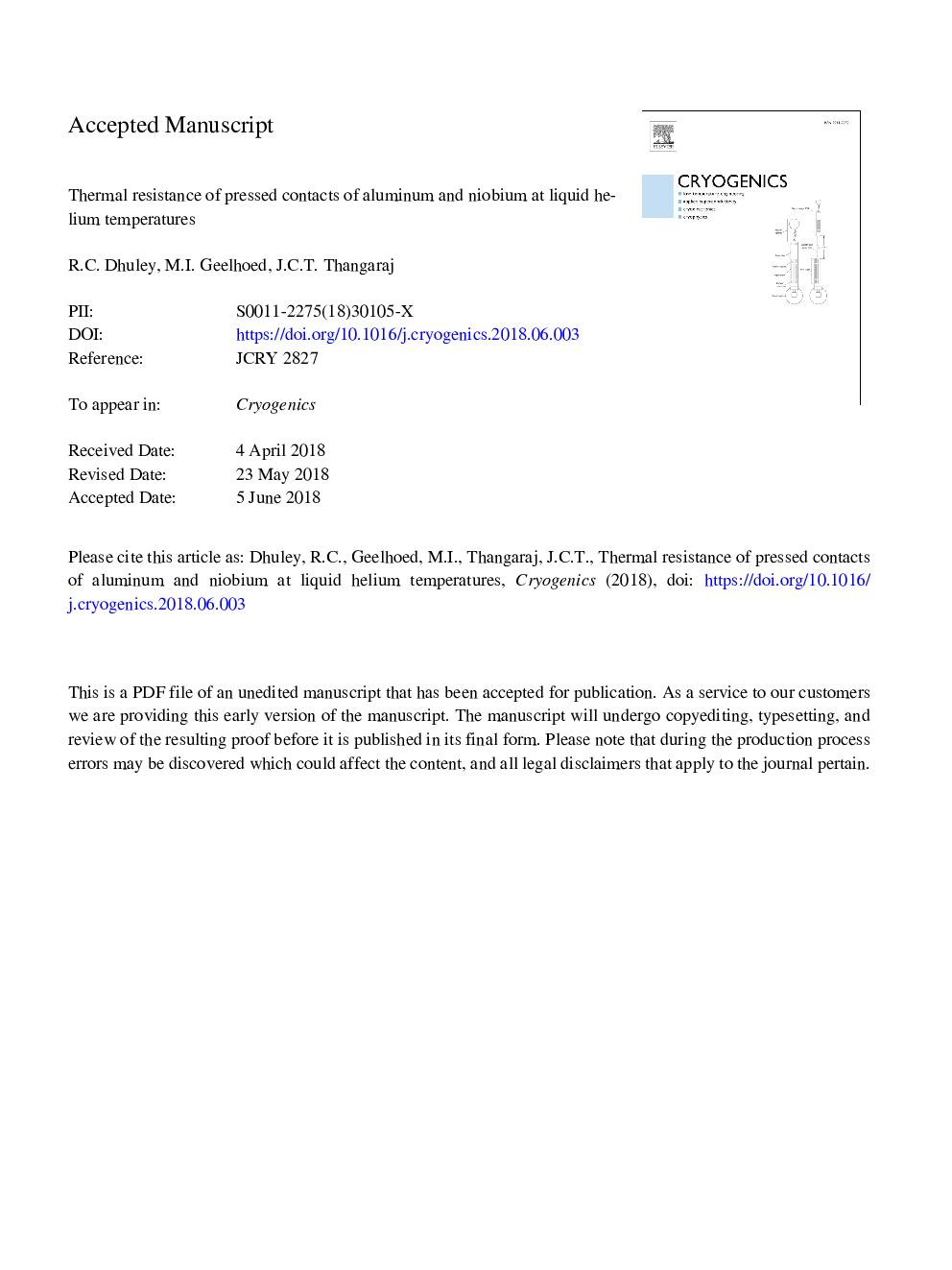| Article ID | Journal | Published Year | Pages | File Type |
|---|---|---|---|---|
| 7915554 | Cryogenics | 2018 | 32 Pages |
Abstract
We examine the resistance to heat flow across contacts of mechanically pressed aluminum and niobium near liquid helium temperatures for designing a thermally conducting joint of aluminum and superconducting niobium. Measurements in the temperature range of 3.5-5.5â¯K show the thermal contact resistance to grow as a near-cubic function of decreasing temperature, indicating phonons to be the primary heat carriers across the interface. In the 4-14â¯kN range of pressing force the contact resistance shows linear drop with the increasing force, in agreement with the model of micro-asperity plastic deformation at pressed contacts. Several thermal contact resistance models as well as the phonon diffuse mismatch model of interface thermal resistance are compared with the experimental data. The diffuse mismatch model shows closest agreement. The joints are further augmented with thin foil of indium, which lowers the joint resistance by an order of magnitude. The developed joint has nearly 1â¯Kâ¯thermal resistance at 4.2â¯K, is demountable, and free of the thermally resistive interfacial alloy layer that typically exists at welded, casted, or soldered joints of dissimilar metals.
Related Topics
Physical Sciences and Engineering
Materials Science
Electronic, Optical and Magnetic Materials
Authors
R.C. Dhuley, M.I. Geelhoed, J.C.T. Thangaraj,
